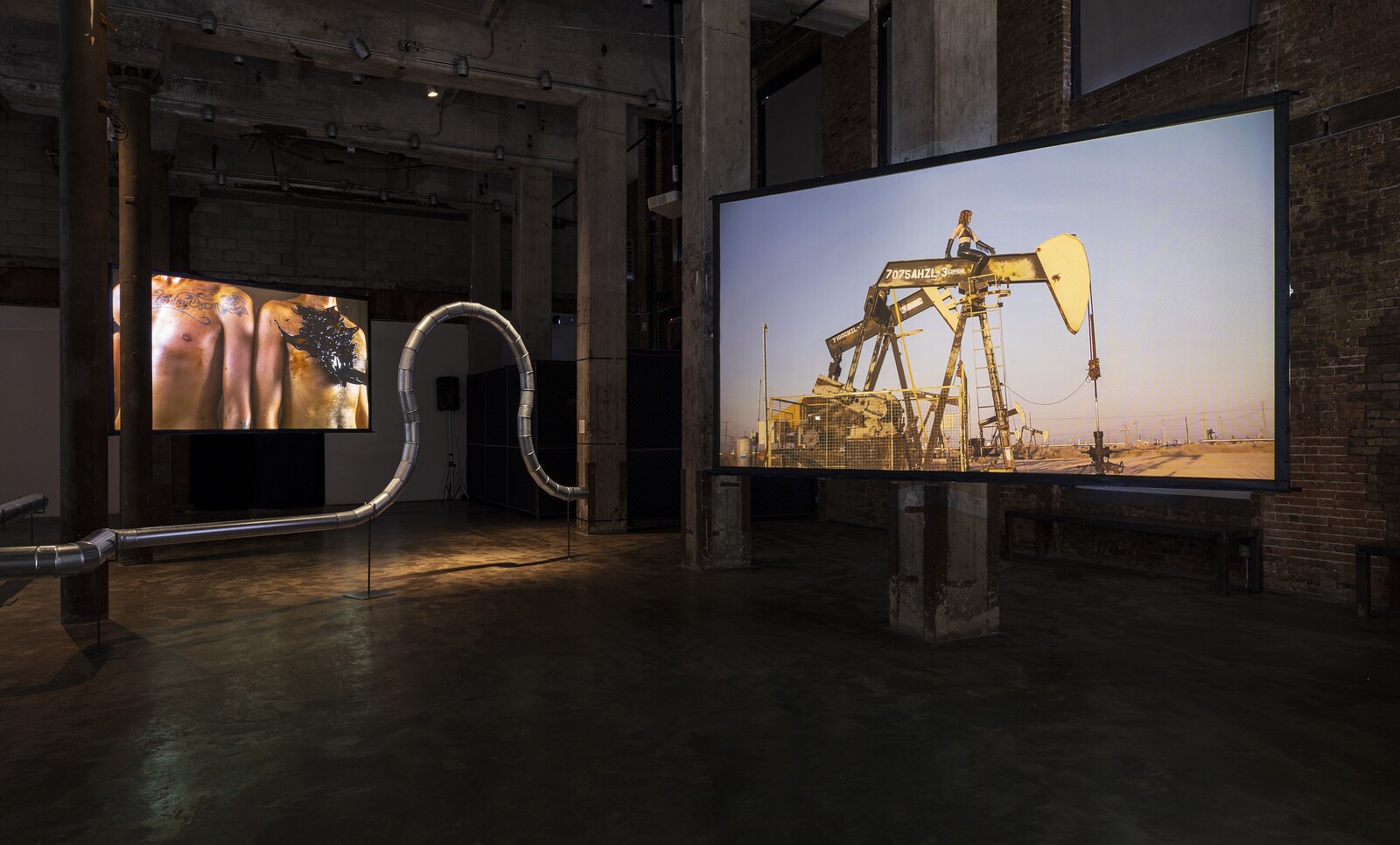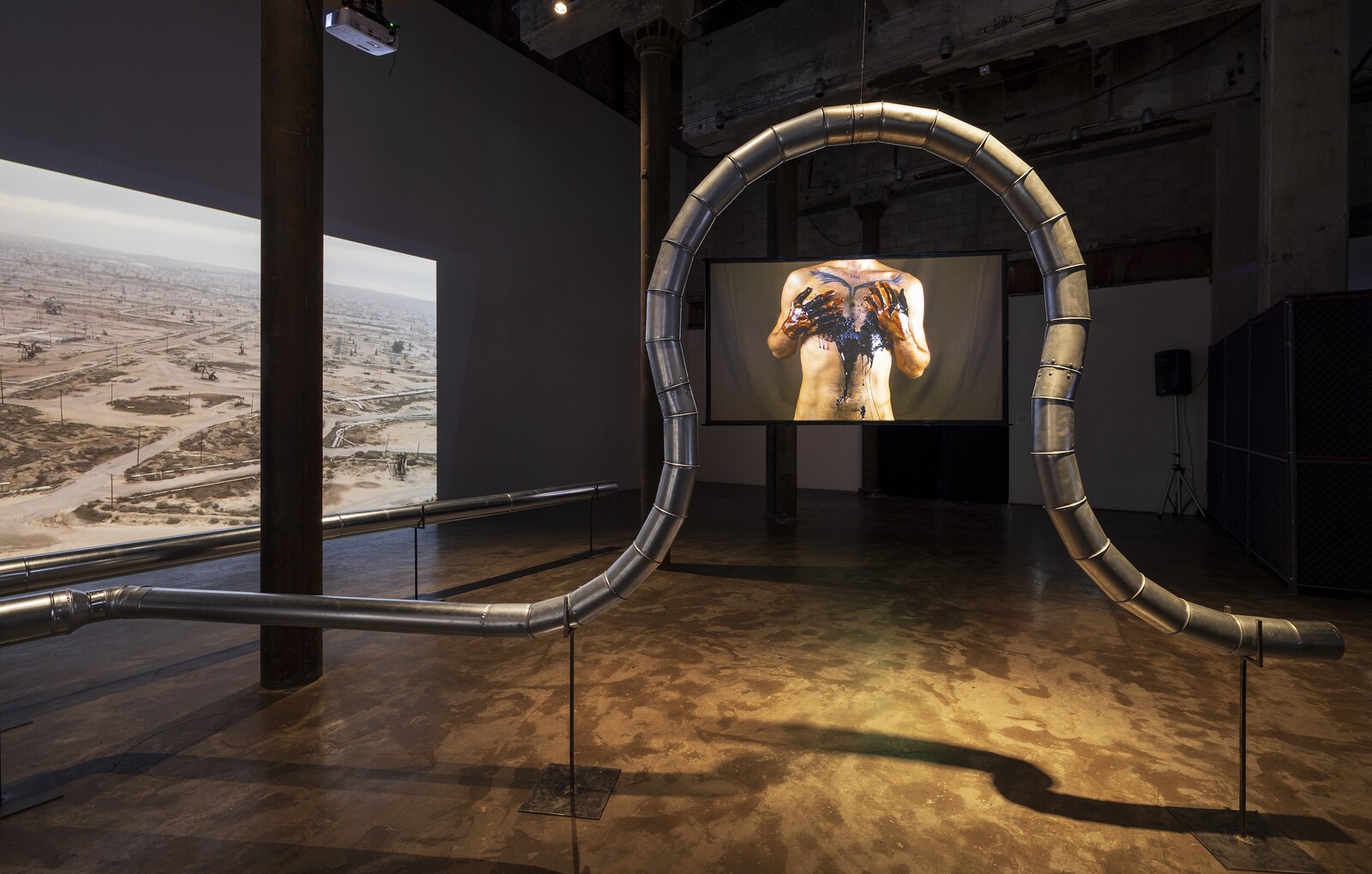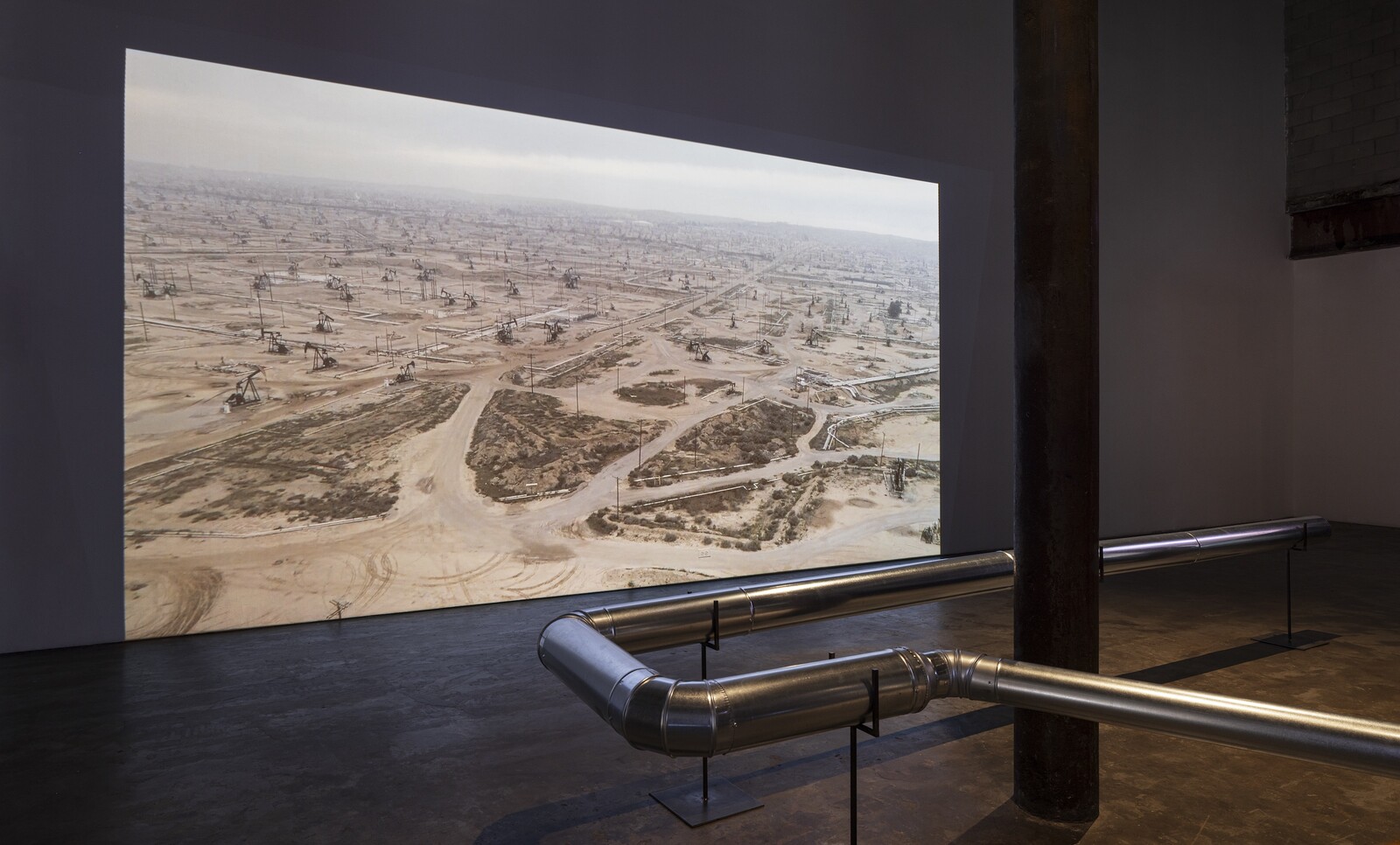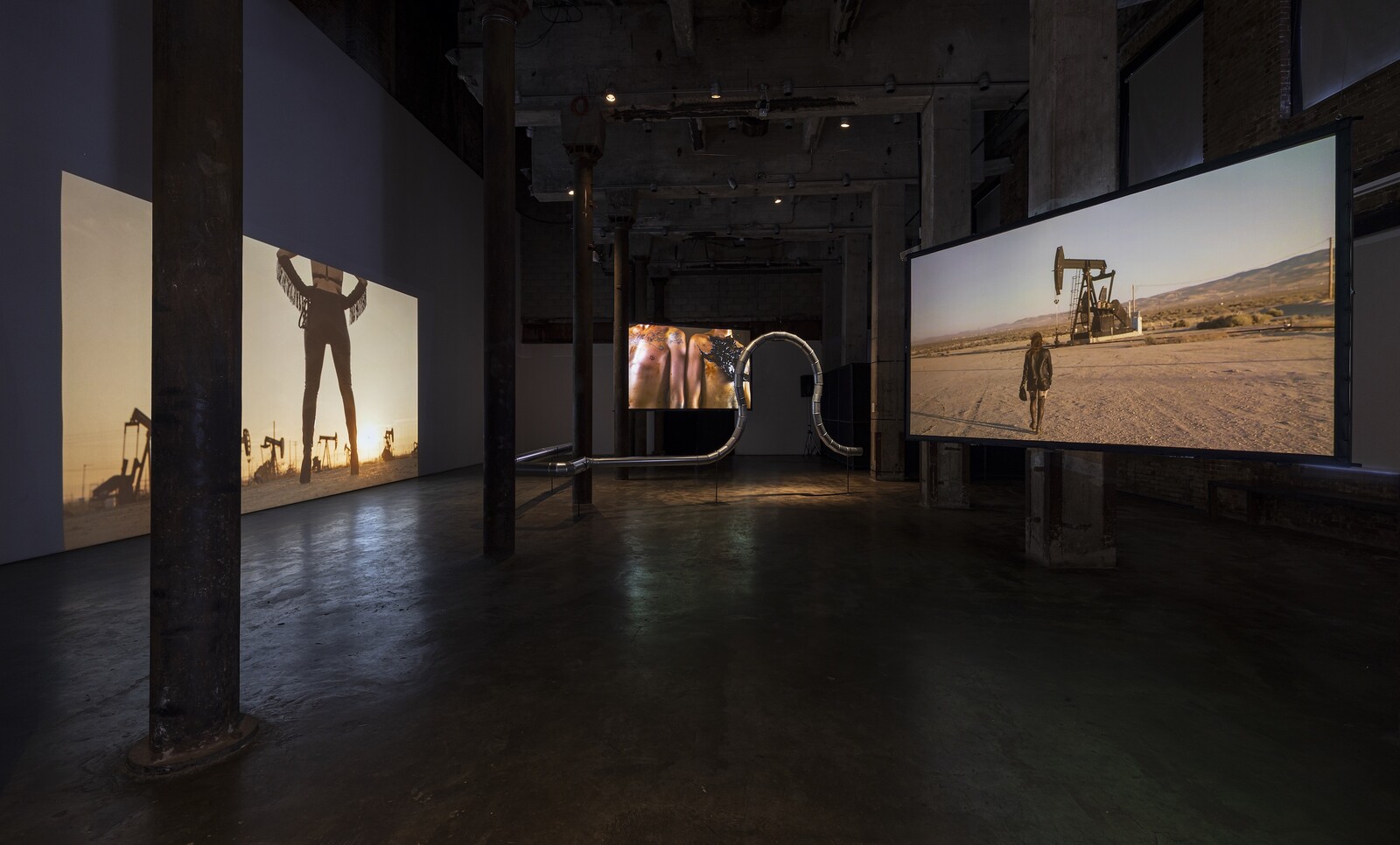Jessica Segall’s transgressive exploration of desire and petroleum unfolds to the beat of a mechanical soundtrack. The work of Berghain resident DJ Steffi, building on Segall’s own recordings of active oil fields, the piston-like pulsations fuse petro-extraction and the nightclub. Desire—for dominion, capital, commodities, relations—has always powered industry; here, industry clearly powers desire, too. Petroleum’s libidinal imaginary encompasses everything from imagery of women virtually fornicating with automobiles to the more abstract seductions of movement, convenience, ease, and accumulation. In Human Energy (2023), a dispersed four-channel video installation with sculptural elements (titled after Chevron’s slogan), Segall renders these fetishizations with erotic effect.
On one channel, the scantily clad, gloved artist climbs and mounts a pumpjack. She rides it as if it were a mechanical bull, moving her hands back and forth to steady herself while the machine repeatedly plunges into the earth. The video was shot in Kern County, California, which is responsible for the vast majority of the state’s oil and fracked gas production and boasts some of the worst air pollution in the country, a burden disproportionately borne by the region’s most vulnerable communities. Panoramic open sky, mountain range, sunset: our petro-cowgirl deploys the tropes that have characterized fantasies of Western expansion and tethers them to dreams of expanded fracking operations. Kern County has been sued on multiple occasions for fast-tracking the production of new oil and gas wells without adequate environmental review. For those opposed to such violently relentless extraction—a demographic that I would hazard includes Segall, who makes work rooted in queer ecology—what does it mean to feel desire while gazing upon this scene?
Another video opens with Segall, donning leather pants with arms akimbo, playing dominatrix as she surveys her dominion: the pumpjacks at work. (Of course, in light of our dependencies on oil, it is unclear exactly who is dominating whom.) Subsequent drone footage gives a birds-eye view of Kern County’s pumpjacks and pipelines, petroleum infrastructure extending as far as the eye can see. Time moves at a crawl, stymying oil’s global flows while alluding to the geological timeframes by which it is produced and the slow violence of its extraction and consumption.
An archway is formed by a sculpture resembling the stainless-steel piping expansion loops used to accommodate thermal expansion and contraction in pipelines. Such allusions to interior dynamism, albeit on a dilated time scale, conjure up the human body’s various pulses. In the next video, two fingers—then a fist—are suggestively inserted into a pool of thick, black crude oil. When a set of hands surface, they are so densely slicked that they appear to be wearing fetish PVC gloves: pleasure-giving kink apparel derived from petroleum byproducts. Anonymized by close crops, performers rub the oil onto their torsos and backs. Segall filmed these scenes in Naftalan, Azerbaijan, where crude oil baths, touted as therapeutic since the twelfth century, became a popular treatment at Soviet-era sanitoriums.
The show’s geographic outlier highlights an alternative paradigm in which full-body intimacy with oil—in this case, oil too heavy for commercial use—is sought-after, and the material’s ability to penetrate our bodies is prized rather than feared. These baths are still offered at Naftalan spas, although the US and EU have deemed naphthalene, which is also found in mothballs, to be a potential carcinogen. Mel Y. Chen has pointed to the ways in which the toxicity that connects human and nonhuman agents can be productively read through queer frameworks, as provoking “subject-object confusions,” challenging “heteronormative understandings of intimacy,” and even promoting pleasure.1 While such notions might be deemed hazardous by those struggling for environmental justice or queer rights in current advocacy schemas, they underscore the weird intensity of our contaminated entanglements, wherein enmeshment may confer a degree of responsibility: an undercurrent in Segall’s work.
Echoing Heather Davis’s remark that there are “inadvertent allegiance[s] between certain forms of queerness and the petrochemical industry,”2 an unlikely alliance comes to the fore in the video installation’s final channel. Tucked away behind a chain-link fence lined with black fabric (and an accompanying explicit content warning), the roving video, which is notably grainier than its counterparts, is set on Kern County’s oil fields at night. Referencing the oil field’s history as a queer cruising site, it depicts men having sex in time to the pumpjacks’ thrusts and masturbating onlookers. What we know to be toxic and destructive has also served as a wellspring for queer pleasure.
“Human Energy” poses difficult, open-ended questions about the relationship between oil, desire, and queerness, that rub up uncomfortably against the fetishization of oil in service of an extractive capitalism that propagates so much harm, above all to marginalized groups. The show challenges any visitor who might consider themselves immune to oil’s seductions—a delusion that falsely claims objective distance from a material with which we are all entangled. It also invites rumination on the forms that sociality and pleasure may take in increasingly toxic, non-reproductive futures.
Mel Y. Chen, Animacies: Biopolitics, Racial Mattering, and Queer Affect (Durham: Duke University Press, 2012), 207.
Heather Davis, “Toxic Progeny: The Plastisphere and Other Queer Futures,” philoSOPHIA vol. 5 no. 2 (Summer 2015), 237.




